Understanding Mold Spore Counts: What’s Considered ‘Normal’?
- Colin Emmons
- Jun 20
- 2 min read

If you’ve recently had a mold inspection or air quality test done, you may have received a lab report full of unfamiliar terms and numbers—most notably, mold spore counts. But what do those numbers actually mean? And more importantly, when should you be concerned?
In this post, we’ll break down what mold spore counts are, what’s considered a “normal” level, and how to interpret your results to protect your home and health.
What Are Mold Spore Counts?
Mold spore counts refer to the number of mold spores present in a measured volume of air—typically expressed as spores per cubic meter (sp/m³). During air quality testing, samples are collected inside your home and compared to outdoor air levels to determine if indoor mold concentrations are elevated.
Mold spores are a natural part of the environment, so they will always be present to some degree—indoors and outdoors. The key question is: Are indoor levels significantly higher than what’s normal?
What’s Considered a Normal Mold Spore Count?
There’s no universal “safe” number set by the EPA or CDC, but indoor spore levels should generally be equal to or lower than outdoor levels and should not show elevated concentrations of harmful species like Stachybotrys, Aspergillus, or Chaetomium.
Here’s a rough breakdown often used by industry professionals:
Spore Count (sp/m³) | General Interpretation |
0–200 | Very low / normal |
200–700 | Low / possibly elevated |
700–1500 | Moderate concern |
1500–3000+ | Elevated / remediation likely needed |
3000–10,000+ | High contamination |
Note: Even low counts can be problematic if they include toxic or allergenic species.
Factors That Influence Spore Count Interpretation
Mold type: Some molds (like Penicillium or Cladosporium) are more common and less harmful, while others (like Stachybotrys or Chaetomium) may warrant immediate remediation, even in lower quantities.
Indoor vs. outdoor comparison: If indoor levels are significantly higher than outdoor levels of the same mold, that’s a red flag.
Location of sampling: Results can vary by room, so context matters. For example, a high count in a basement with visible mold is more concerning than in a rarely-used attic.
Health symptoms: Even low counts can be problematic for individuals with asthma, allergies, or compromised immune systems.
When Should You Be Concerned?
You should consider professional remediation if:
The indoor spore count is significantly higher than outside
The test shows elevated levels of toxigenic molds
You have visible mold or musty odors
You or your family are experiencing unexplained health symptoms
What Happens After High Spore Counts Are Detected?
At Above All Mold Removal, we respond to elevated mold spore counts with:
Containment barriers and negative air pressure
HEPA filtration systems
Safe removal of contaminated materials
Disinfection and mold-resistant treatments
Optional post-remediation testing to confirm results
Final Thoughts: Mold Counts Matter—But Context Is Key
Understanding mold spore counts can help you make informed decisions about the health of your home. If your report shows elevated levels—or you simply want peace of mind—trust a certified professional to walk you through next steps.
Serving homeowners across Massachusetts, Above All Mold Removal offers thorough mold inspections, testing, and expert remediation to ensure safe, healthy air in your home. Contact us today to schedule an evaluation.




Comments